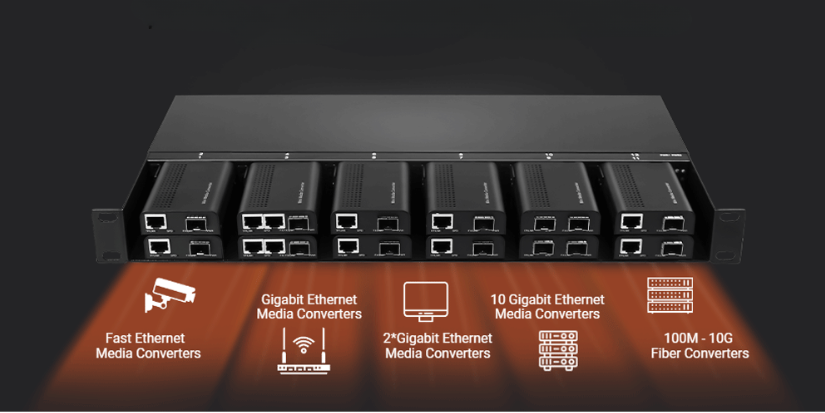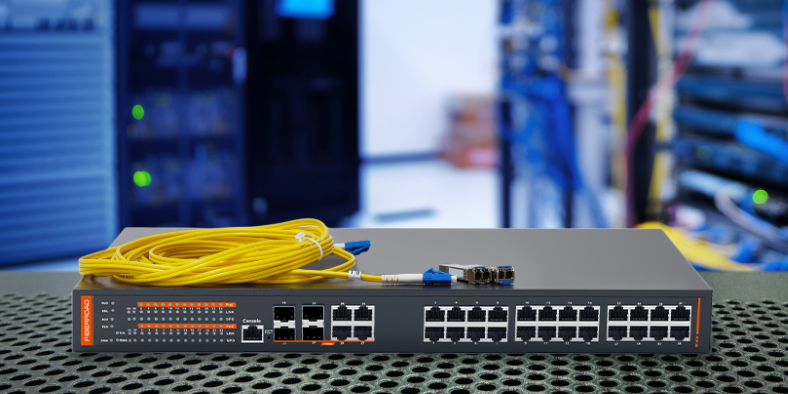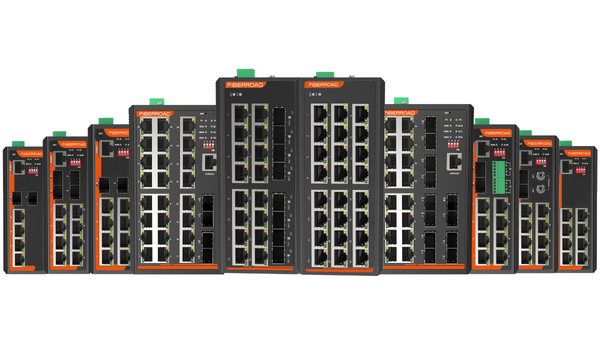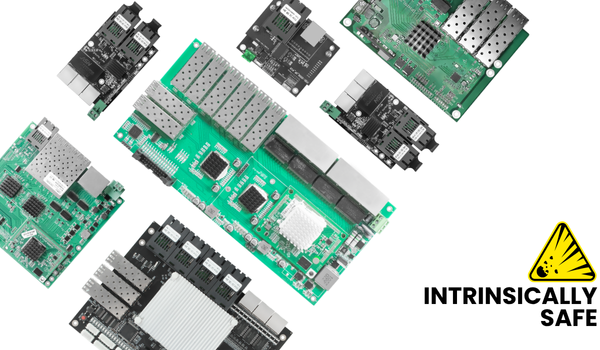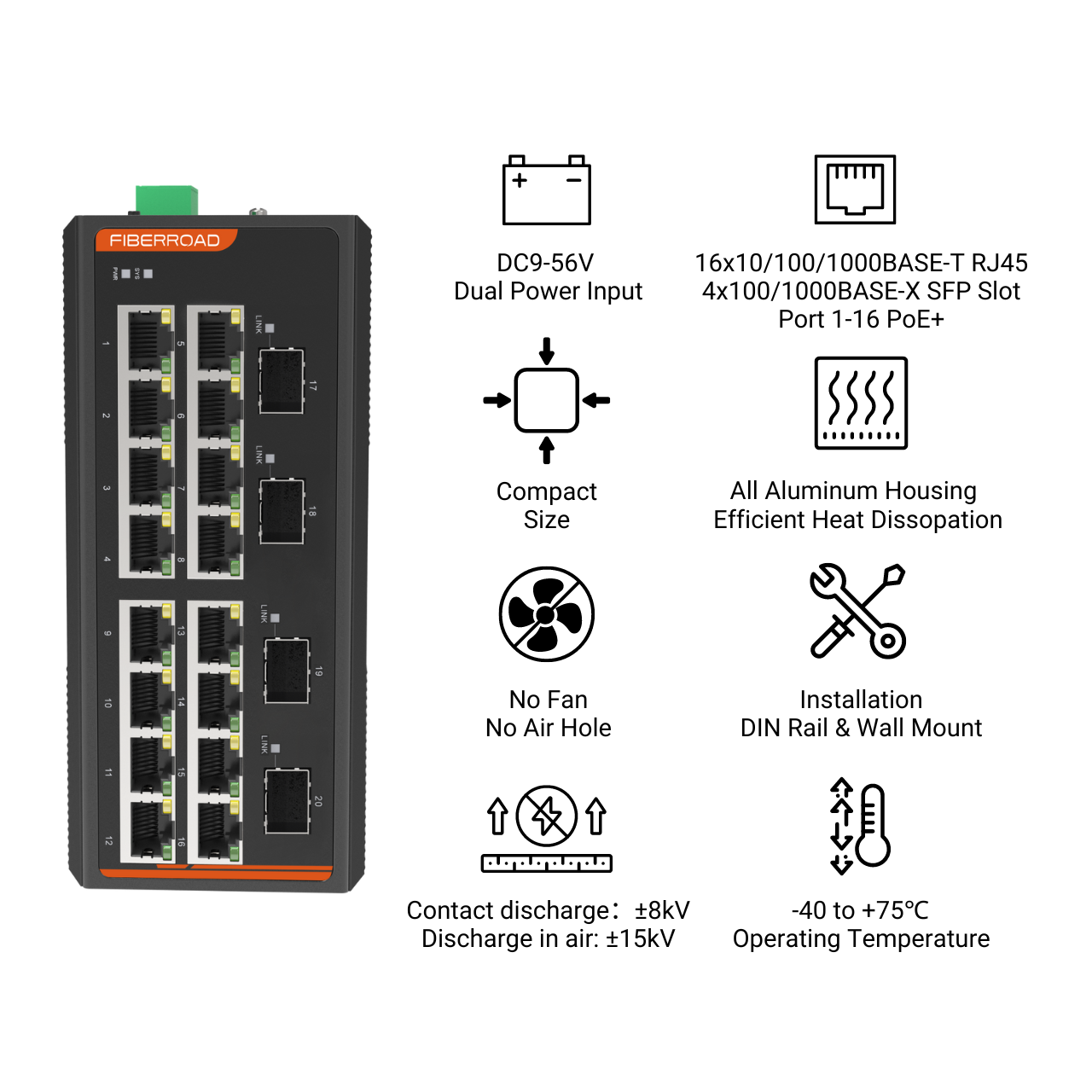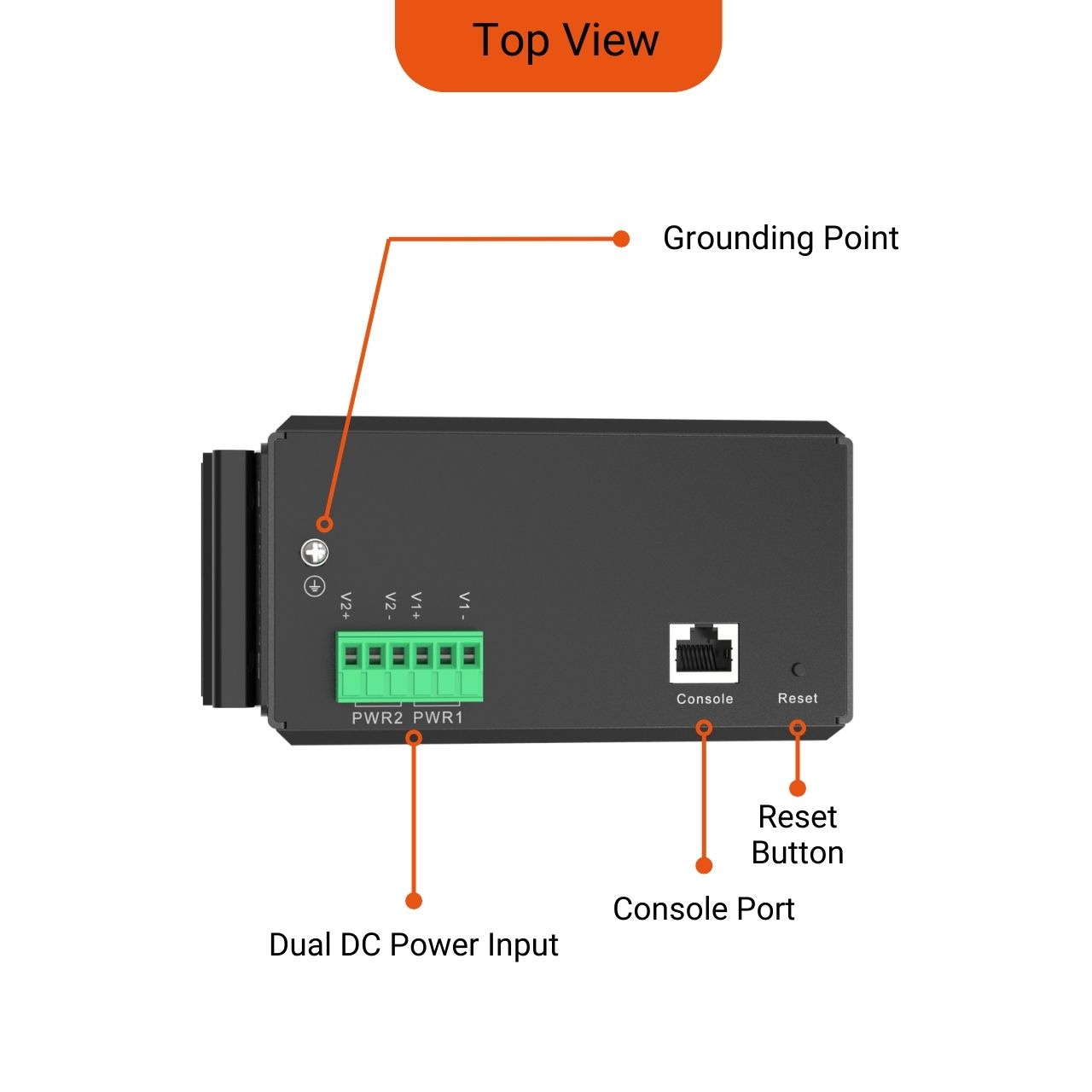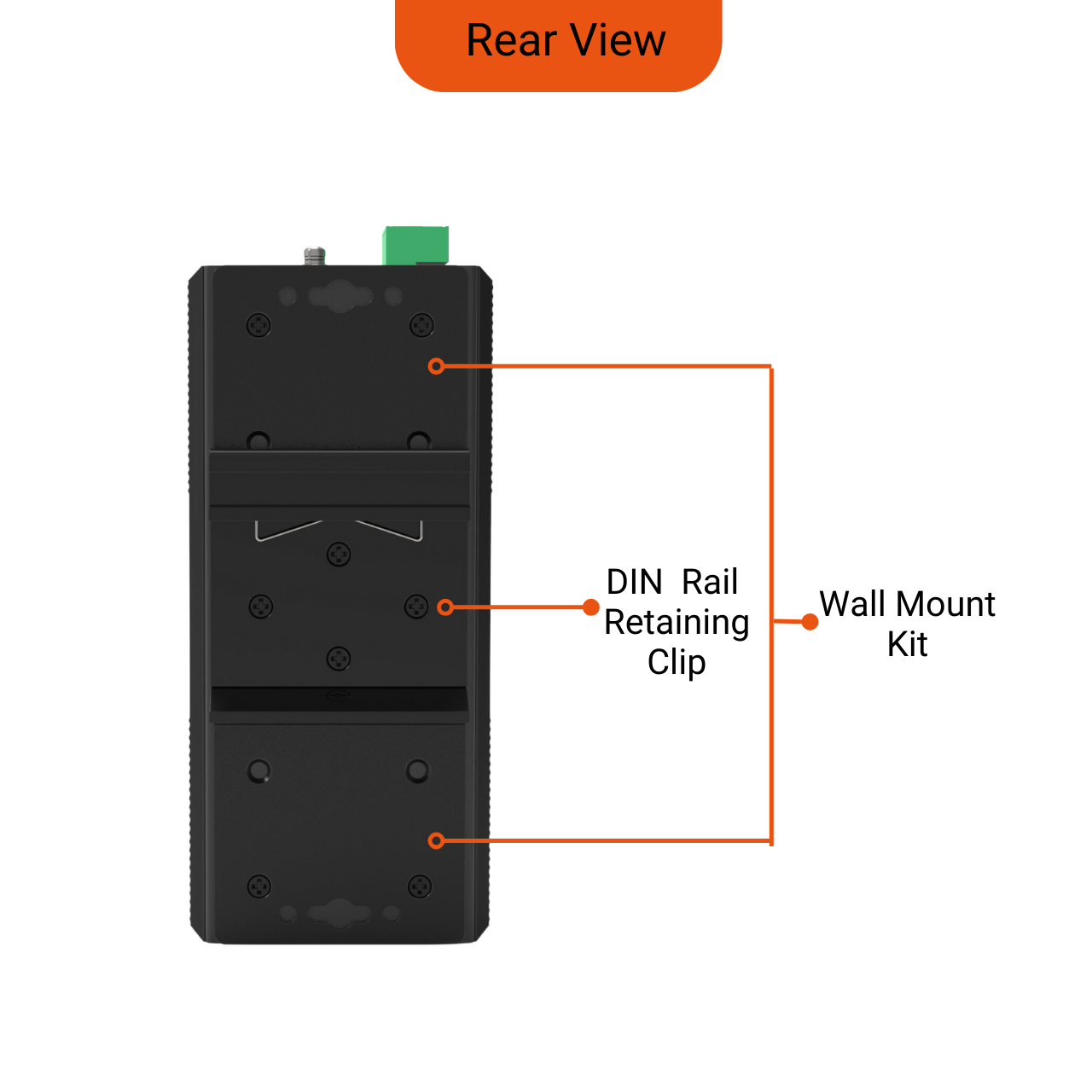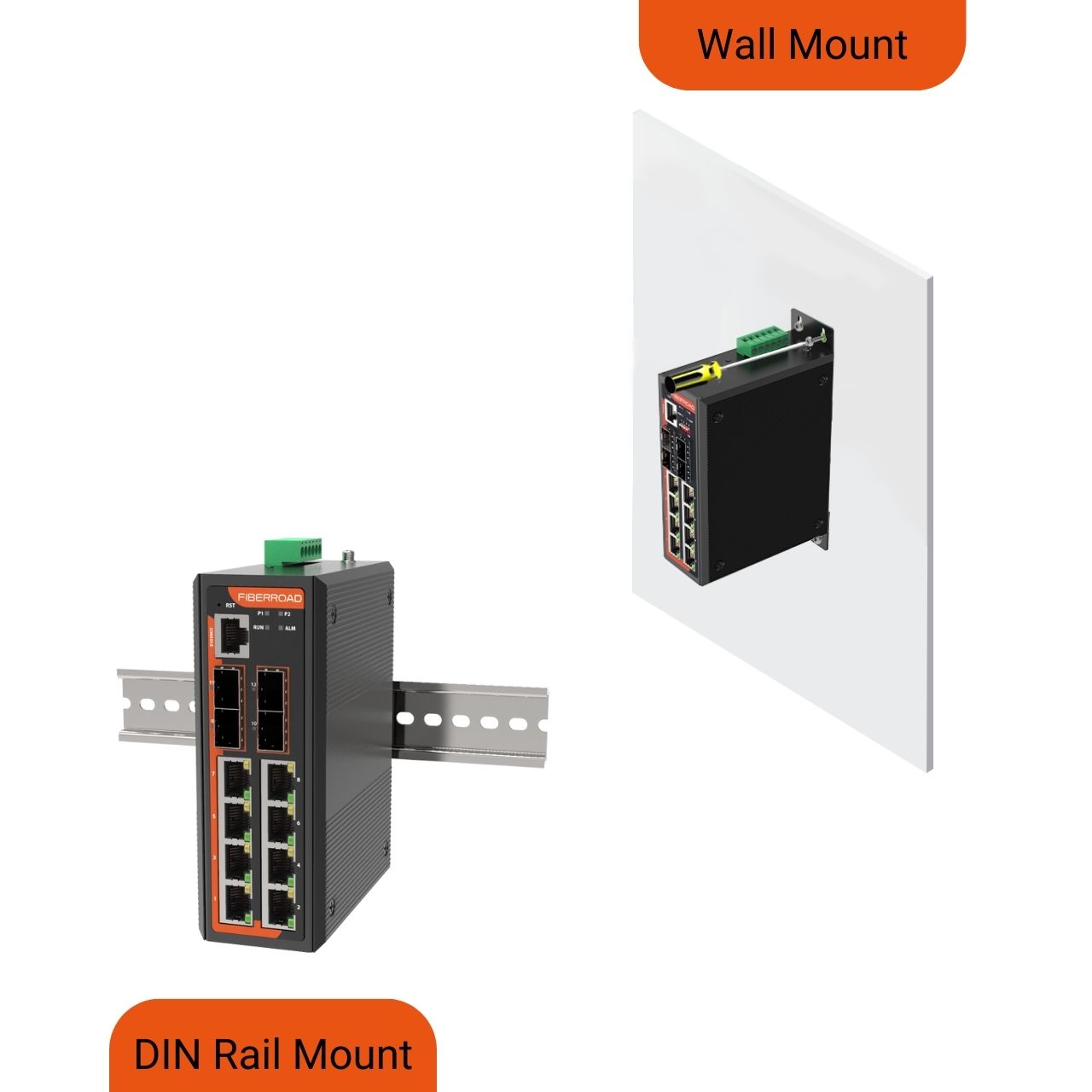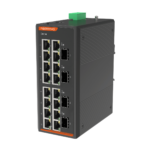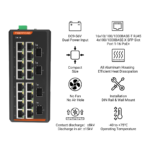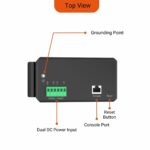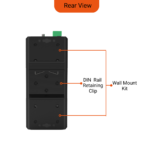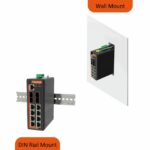Share This Product
Revolutionize Industrial Network Efficiency with Layer 2+ Managed PoE Switches
It is impossible to overstate the benefits of Layer 2+ Managed Industrial PoE Switches when it comes to improving network efficiency in industrial settings. These advanced switches provide a host of benefits that make them ideal for demanding environments. IGMP snooping, VLAN support, and QoS prioritization allow these switches to ensure seamless communication within the network.
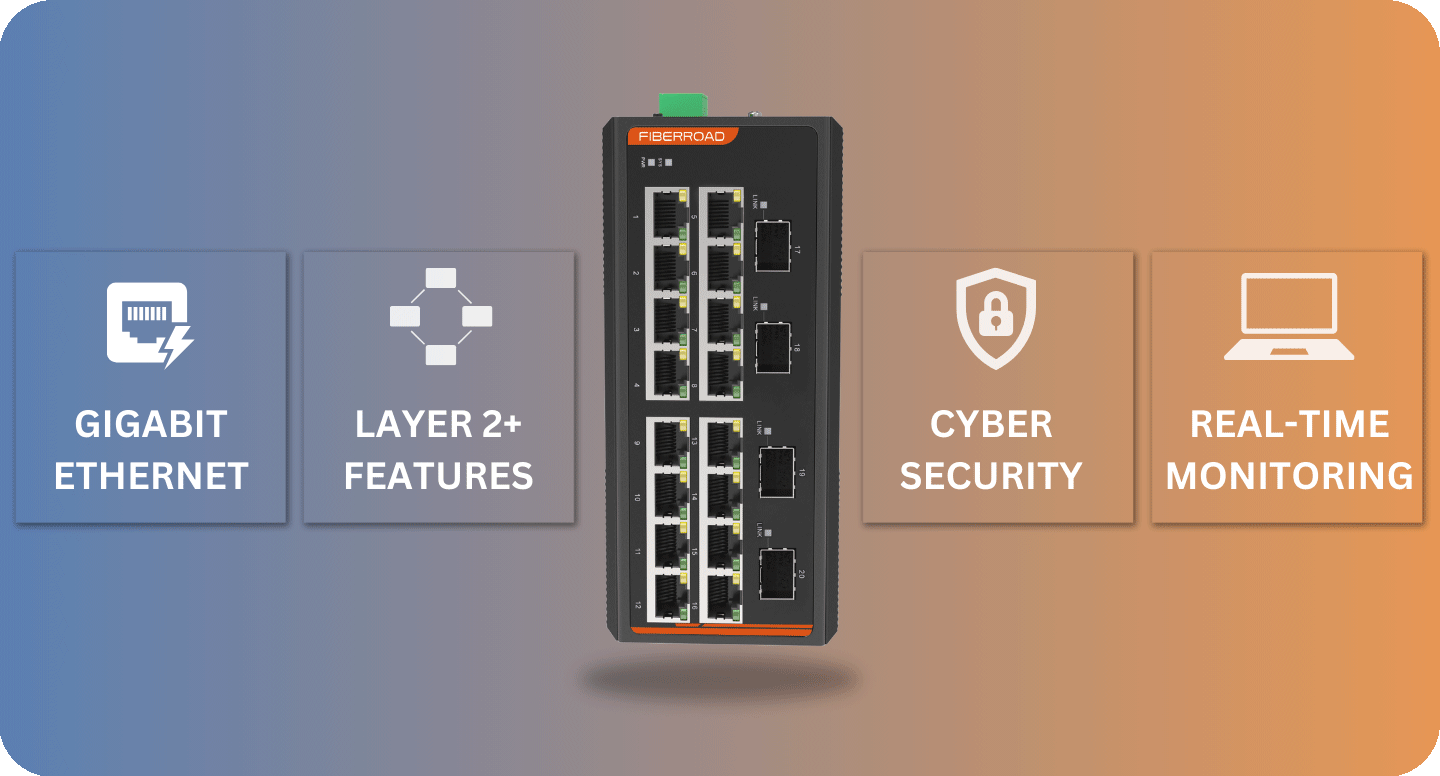
The Benefits of Upgrading to a Layer 2+ Managed Industrial PoE Switch for Enhanced Performance in Harsh Environments
A layer 2+ managed industrial PoE switch can significantly improve the efficiency and reliability of industrial networks in harsh environments due to its variety of benefits. Designed to withstand extreme temperatures, moisture, dust, vibrations, and electromagnetic interference, these switches are designed to withstand these conditions in industrial settings.
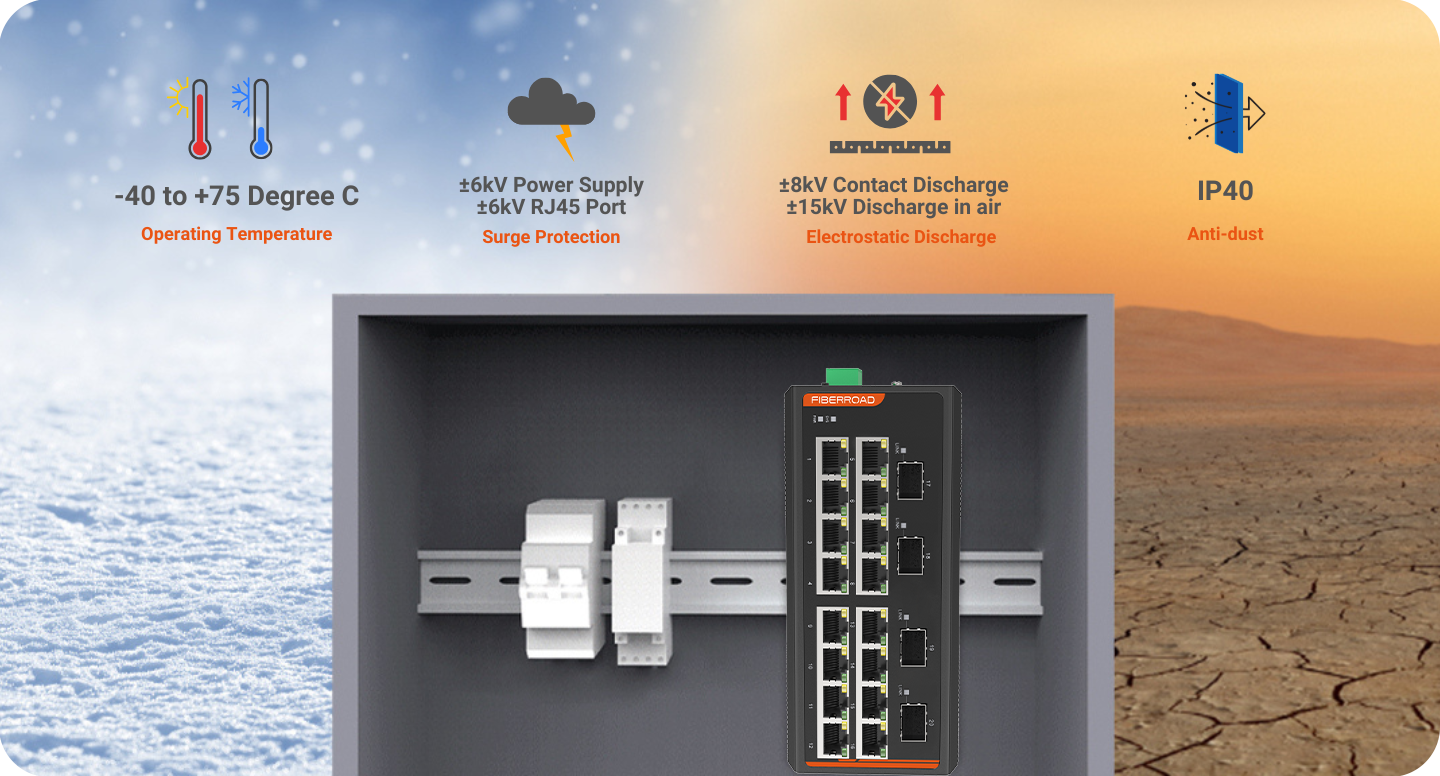
Connecting industrial networks securely to maximize efficiency and productivity
In today’s rapidly evolving industrial landscape, secure network connectivity is essential for efficient and productive operations. Innovative technologies such as MSTP and ERPSv2 play a critical role in achieving seamless communication while maintaining a high level of security. With the implementation of MSTP, redundant paths are established within the network to ensure uninterrupted data transmission, enhancing reliability and minimizing downtime for increased efficiency. Moreover, ERPSv2 offers rapid fault detection and recovery in ring topologies, further improving network resilience and productivity. By utilizing these advanced technologies, businesses can optimize their operations and stay ahead of the competition in the fast-paced industrial environment.

MSTP

ERPSv2
PoE Schedule for Energy Savings
In order to contribute to energy conservation worldwide and environmental protection, the FR-7M3416P is capable of effectively controlling the power supply in addition to providing high power levels. It is a powerful tool for small and medium-size businesses to save power and money by using the built-in “PoE schedule” function to enable or disable PoE power feeding for each PoE port at specified intervals.
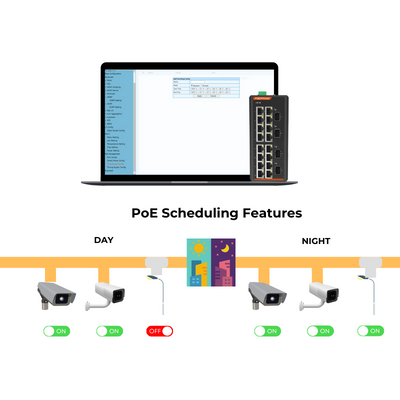
PoE Power Management
You can configure the maximum power, percentage of PoE power to be reserved, PoE power alarm threshold, and maximum power on each interface depending on the quantity, type, and input voltage of the PoE-capable module. Power parameters can be set based on the requirements of PDs connected to a device to use PoE power effectively and ensure device stability.
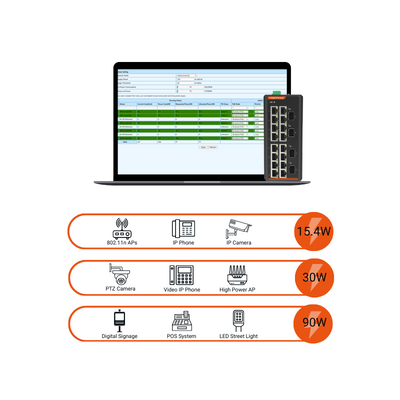
The Power of Console, Web, and NMS Network Management
The Layer 2+ Managed Industrial Ethernet Switch provides a comprehensive solution for efficiently managing your network infrastructure. With its advanced technology, it offers console, web, and SNMP interfaces to simplify the process. The user-friendly web interface allows for easy adjustment of settings, real-time traffic monitoring, and issue resolution. It seamlessly integrates with existing network management systems through the SNMP interface, providing centralized control over all connected devices. For those who prefer a hands-on approach, the console interface offers direct access to advanced configuration options for maximum flexibility. With these powerful tools at your disposal, network management is effortless and efficient for your industrial Ethernet system.
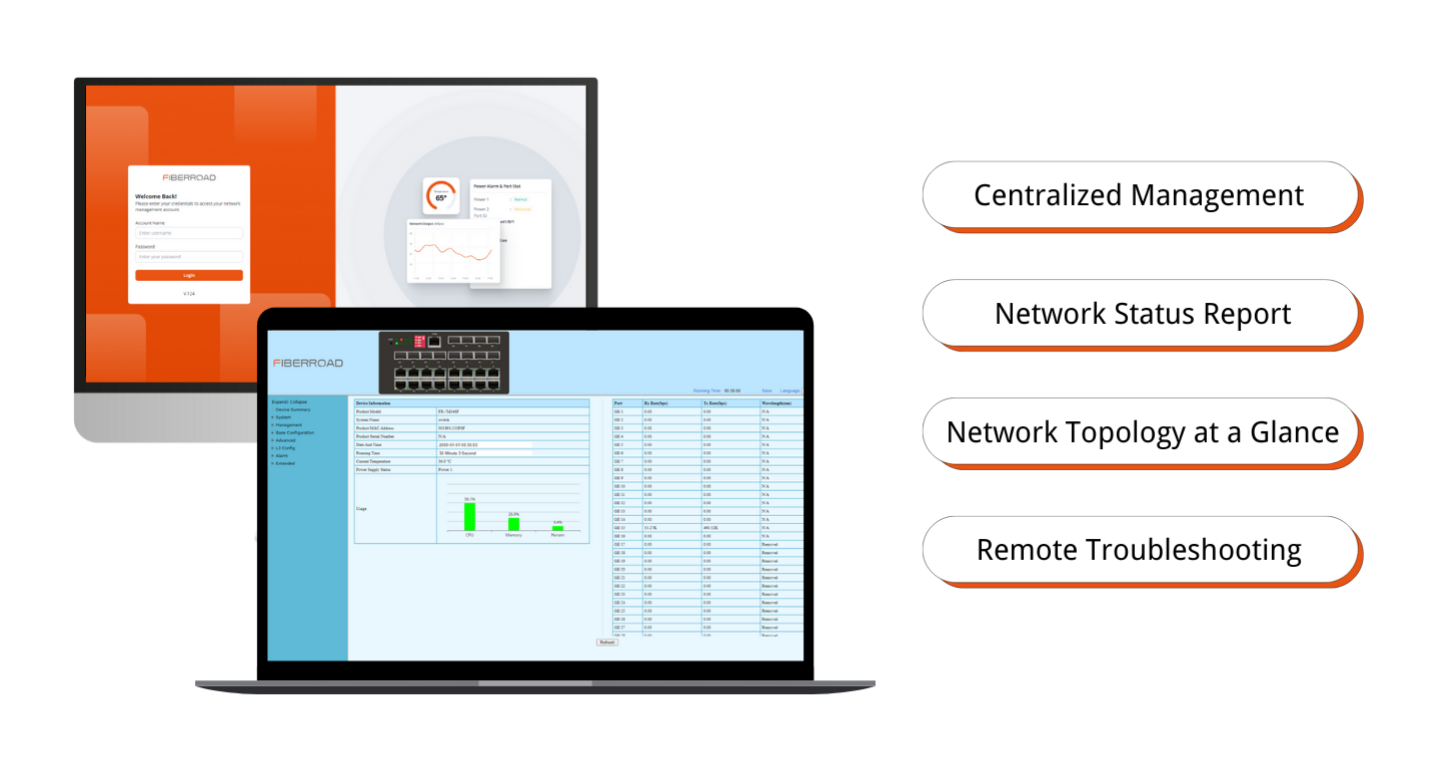
| Hardware Specifications | |
| Product | FR-7M3416P-24V |
| Copper Ports | 16×10/100/1000BASE-T RJ45 Auto-MDI/MDI-X (Port 1-16) |
| Fiber Ports | 4×100/1000BASE-X SFP Slots (Port 17-20) |
| Console | 1x RJ45-to-RS232 Serial Port(115200) |
| Connector | 1 removable 6-contact terminal blocks
Pin 1/3 for Power 1, Pin 4/6 for Power 2 |
| Alarm | One relay output for power failure, Alarm relay current carry ability: 1A@24V DC |
| RAM | 128Mbyte |
| FLASH | 32MByte |
| Reset Button | <5 sec: System Reboot; >10 sec: Factory Default |
| Surge Protection | ±6kV DC, ±6kV RJ45 |
| Enclosure | IP40 aluminum case |
| Installation | DIN-Rail and Wall-mount |
| Dimension | 160 x 132 x 70mm |
| Weight | 1000g(Bare weight), 1300g(With package) |
| Switching | |
| Switch Architecture | Store-and-Forward |
| Switch Fabric | 56Gbps/non-blocking |
| Forwarding Rate | 29.76Mpps(64-byte packet size) |
| Packet Buffer Size | 4 Mbits |
| Maximum Packet Length | 10K bytes |
| MAC Address Table | 8K entries, automatic source address learning and aging |
| Flow Control | IEEE 802.3x pause frame for full duplex, Back pressure for half duplex |
| PoE & Power Supply | |
| PoE Ports | Port 1 to 16 IEEE802.3 af/at |
| PoE Power Supply Type | End-span |
| Power Supply Pin | 1/2(+), 3/6(-) |
| Max Power Per Port | 30W |
| Total PWR /Input Voltage | 90W(12VDC)
120W(24VDC) 240W(48VDC) |
| Power Consumption | 15 Watts Max (without PoE load) |
| Environmental | |
| Operating Temperature | -40℃~75℃ (-40 to 167 ℉) |
| Storage Temperature | -40℃~85℃ (-40 to 185 ℉) |
| Operating Humidity | 5%~95% (non-condensing) |
| MTBF | 907,476 hours @ Telcordia SR-332 Standard |
| Heat Dissipation | 65 BTU/h (non-PoE mode)
1054 BTU/h (with 240W PoE load) |
| Cooling | Passive Cooling, Fanless Design |
| Noise Level | 0 dBA |
| Software Features | |
| Port Configuration | Port(Admin Status) disable/enable
Copper Port: Auto-negotiation 10/100/1000Mbps full and half duplex mode selection Fiber Port: 100M/1000M speed selection Flow Control disable/enable Power saving(EEE) disable/enable Each port description |
| Port Status | Display each ports’ speed duplex mode, link status, flow control status, auto negotiation status, Fiber Port Information, Port Traffic |
| Port Mirroring | Source Ingress/ Egress Port/ Both, Many-to-1 monitor |
| VLAN | Up to 4K VLAN groups, out of 4094 VLAN IDs
IEEE 802.1Q tag-based VLAN IEEE 802.1AD Q-in-Q tunneling(Double VLAN) GVRP(Generic VLAN Registration Protocol) |
| Link Aggregation | IEEE 802.3ad LACP/Static trunk
Supports 6 trunk groups with 4 ports per trunk |
| Spanning Tree Protocol | IEEE 802.1D Spanning Tree Protocol
IEEE 802.1w Rapid Spanning Tree Protocol IEEE 802.1s Multiple Spanning Tree Protocol |
| Multicast | Dynamic/Static Multicast groups
IGMP Snooping v1,2,3 Port-based IGMP Snooping Fast Leave GMP Querier |
| Rate Limitation | Per Port Rate Limitation
Ingress: 16-1000000 kbps/Egress: 16-1000000 kbps |
| Ring | ITU-T G.8032 ERPS, Recovery time<10ms |
| QoS | Traffic classification based, strict priority and WRR
8-level priority for switching -Port number -802.1p priority -802.1Q VLAN tag -DSCP/TOS field in IP Packet |
| ACL | IP-based ACL/MAC-based ACL
ACL based on: -MAC Address -IP Address -Ethertype -Protocol Type -VLAN ID -DSCP -802.1p Priority |
| Security | Port Security
Static MAC address IEEE 802.1x port-based network access control RADIUS authentication DHCP Snooping, DHCP option 82 |
| PoE Management Functions | |
| PoE System Management | PoE Port status monitoring
Total PoE power budget control PoE usage threshold and temperature threshold PoE port Priority PoE mode(PoE/PoE+/PoE++) PD reboot(Zero Traffic Duration) |
| PoE Schedule | Absolute/Periodic Mode |
| Software Features | |
| Layer 3 Functions | |
| IP Interfaces | Max. 8 VLAN interfaces |
| Routing Table | Max.32 routing entries |
| Routing | IPv4 software static routing |
| Management | |
| Basic Management Interface | Console; Telnet; Web browser; SNMPv1/v2c |
| Secure Management Interface | SSHv2, TLSv1.2, SNMPv3, SNMP MIB |
| System Management | Firmware Upgrade by HTTP protocol through Ethernet network
Configuration upload/download through HTTP Remote syslog, System log LLDP protocol, SNTP PREVIEW NMS Alarm(Relay, Led, Temperature, Trap, Power) |


